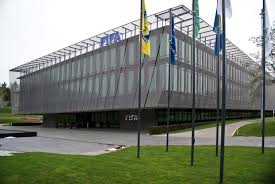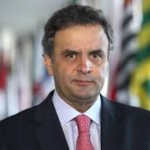 Before I know who or what it was, I purchased a small fuzzy creature with a pointy nose who wore a Brazil 2014 T-shirt and was the new mascot for the world cup. His name is derived from Futebol + Ecologia so I thought I would try and understand the ecological impact of the World Cup.
Before I know who or what it was, I purchased a small fuzzy creature with a pointy nose who wore a Brazil 2014 T-shirt and was the new mascot for the world cup. His name is derived from Futebol + Ecologia so I thought I would try and understand the ecological impact of the World Cup.
Three Banded Armadillo
 It seems Fuleco is inspired by the three banded armadillo who is an endangered species in Caatinga, a unique, semi-arid scrub forest in North Eastern Brazil. The Nature Conservatory says that the Caatinga covers 11% of Brazil and is suffering from extreme desertification threatening the armadillos and other species.
It seems Fuleco is inspired by the three banded armadillo who is an endangered species in Caatinga, a unique, semi-arid scrub forest in North Eastern Brazil. The Nature Conservatory says that the Caatinga covers 11% of Brazil and is suffering from extreme desertification threatening the armadillos and other species.
The author of The Galapagos, Henry Nichols, argues that FIFA is doing title or nothing to actually help the real three banded armadillo and its habitat and urges FIFA and Brazil’s government to do much more.
FIFA itself appears to be trying to show that it is an environmentally aware organization and moved into a carbon neutral new headquarter in 2006 claims that the 2011 Women’s World Cup was “climate neutral and sustainable”
moved into a carbon neutral new headquarter in 2006 claims that the 2011 Women’s World Cup was “climate neutral and sustainable”
Sustainability of Brazil 2014 ?
In Brazil, however, the situation is not so clear.
On the one hand, FIFA developed a Sustainability Strategy for the world cup . The strategy is based on five principals including Accountability, Ethics & Anti-Corruption, Transparency, Respect for Stakeholder Interests, and Respect for the Rule of Law.
On the other hand, critics point to the enormous cost of the World Cup both in economic, human, and environmental terms.
CNBC estimates that the 64 matches will cost $ 11 billion for the country and critics contend that Brazil is facing huge challenges and that the money would have been better spent on other things.
In terms of the human cost, Bazil has reportedly demolished the homes of people living near world cup venues and made an enormous effort to make the cities safe and attractive for visitors increasing the size and strength of the police. In a film that highlights the contrast between rich and poor in Brazil, Danish film maker Mikkel Keldorf, claims that 200,000 people will be displaced by World Cup construction although I could not find anything to corroborate that number.
FIFA estimates the carbon footprint at just over 2.7 Million tons from holding the tournament which suing the EPA’s converter is about the equivalent of 570,000 cars or less than 1% of the 80 million cars on the road in Brazil. FIFA’s estimates, however, do not include stadium construction, transportation infrastructure and the 3 billion television viewers around the world watching the games.
Dilma’s future


In my view, the real test of weather Brazilians feel the World Cup is positive or negative for the country will come in October when Brazil holds its presidential elections. Ms. Rouseff, the hand picked successor to Lula da Silva is running against Eduardo Campos, a socialist and Aêcio Neves, former Governor of Minas Gerais.
The country has quieted down since the protests last year and Dilma continues to command a significant if shrinking lead over Neves (31.5% to 22.5%). Brazil has also apparently built up its police force to keep things quiet during the World Cup but if Neymar jr. and his colleagues do not win and Brazilians decide it was not worth all the money spent, it will cost her the election.

